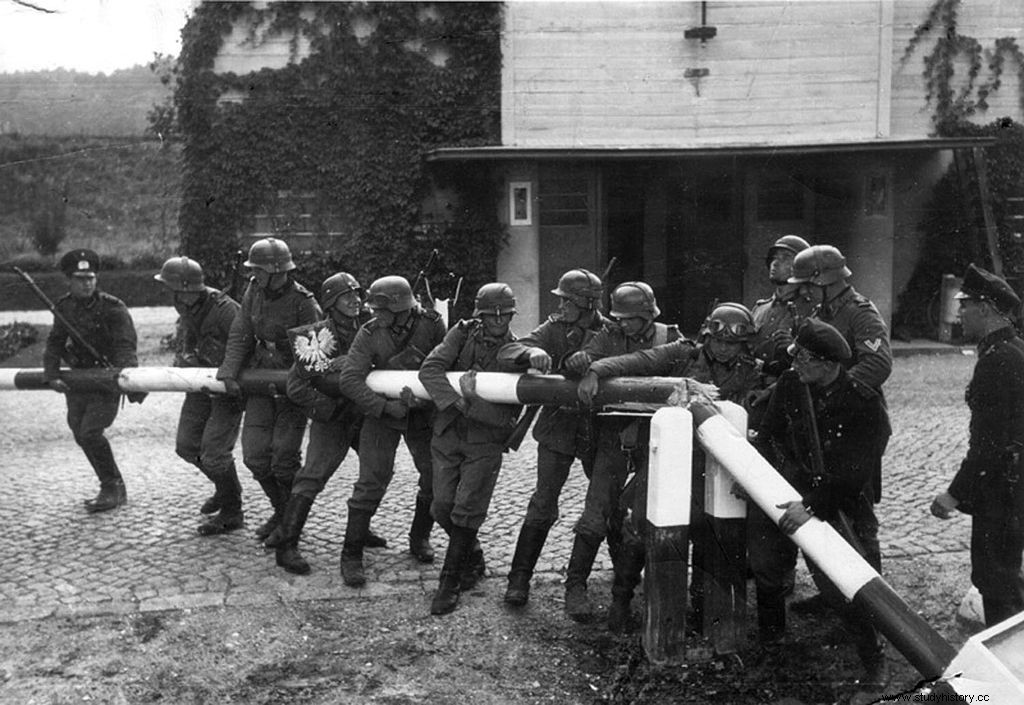Shortly after the annexation of Austria by Germany, the Munich agreements signed on September 30, 1938 saw France and England deliver Czechoslovakia to Adolf Hitler. Winston Churchill will say of this agreement:“they accepted dishonor to have peace. They will have dishonor and war! » . Indeed, shortly after, strong in this victory without shells, Hitler knew he was all-powerful. From then on, six months later, on March 15, 1939, the swastika floated over Prague, which was now subject to the Reich, again without a shot. The European powers then became aware of the danger.
September 1, 1939

Characters
Reinhard Heydrich
Heinrich Himmler
Adolf Hitler
Heinrich Müller
Alfred Naujocks
Joseph Stalin
Procedure
Also, when Hitler asserted his rights over Danzig (a former German free city but now Polish following the Treaty of Versailles) and its corridor, which gave access to the Baltic Sea for Poland, London and Paris opposed it. However, during the summer of 1939, Hitler joined forces with the Soviet Union to sign the non-aggression pact in the event of the annexation of Poland (August 23, 1939).
So it's without scruples that Hitler, who dreams of a Greater Germany, asks his right-hand man, Himmler, to organize an alleged attack by the Poles on German territory. Preparing the plan, the latter asks Heydrich (German SS soldier) and Müller (head of the Gestapo) to carry it out.
Called "Operation Himmler" or "Gleiwitz incident", the plan is led by Naujocks , an SS. On the night of August 31, 1939, a group of German officers (the SS), wearing Polish uniforms, attacked the Polish radio station in Gleiwitz (now Gliwitz or Gliwice) and broadcast a call for an uprising against the Germans. Constraints to retaliate, the 1
st
September 1939, 48 divisions of the Wehrmacht, based on the border and watching for the signal, trample Poland, when 1,400 Luftwaffe planes bombard it.
The lightning war, “Blitzkrieg”, lasts barely a few weeks. Indeed, its strategy consists in destroying the lines of communication, the factories and other strategic points. The incessant bombardments forced the Poles to withdraw. On September 5, the Polish government left Warsaw for Lublin, and on the 15th, the capital was invaded. On the 17th, it was the turn of the (Russian) Red Army to invade Poland. On October 6, 1939, Stalin and Hitler overthrew the Republic of Poland.
Consequences
The Polish campaign, also called the "White Plan" in Germany, which is Germany's unilateral aggression towards the latter, marks the beginning of one of the major conflicts of the 20 th century. England and France declared war on Hitler on September 3, 1939. The Allies against Germany got bogged down in the Phoney War which, as the conflict progressed, would become World War II.
